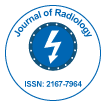Nuestro grupo organiza más de 3000 Series de conferencias Eventos cada año en EE. UU., Europa y América. Asia con el apoyo de 1.000 sociedades científicas más y publica más de 700 Acceso abierto Revistas que contienen más de 50.000 personalidades eminentes, científicos de renombre como miembros del consejo editorial.
Revistas de acceso abierto que ganan más lectores y citas
700 revistas y 15 000 000 de lectores Cada revista obtiene más de 25 000 lectores
Indexado en
- Índice Copérnico
- Google Académico
- Abrir puerta J
- Revista GenámicaBuscar
- InvestigaciónBiblia
- Biblioteca de revistas electrónicas
- Búsqueda de referencia
- Universidad Hamdard
- EBSCO AZ
- OCLC-WorldCat
- Catálogo en línea SWB
- Biblioteca Virtual de Biología (vifabio)
- publones
- Fundación de Ginebra para la educación y la investigación médicas
- ICMJE
Enlaces útiles
Revistas de acceso abierto
Comparte esta página
Abstracto
40 ml And 50 ml Contrast Volume Comparison in 256-Slice Craniocervical Computed Tomography Angiography
Sharma BR, Timilsina M, Yuan QH and Liu D
Objective: The main objective of this study is to reduce attenuation profiles and decrease the perivenous artifacts by decreasing the contrast amount used than used regularly.
Material and methods: Sixty six patients were randomly assigned into two groups (Group A and B), each comprising 33 patients. Group A (21 men, 12 women) received the department’s standard protocol of 50 ml intravenous contrast volume, whereas Group B (19 men, 14 women) received 40 ml of contrast volume and underwent craniocervical CTA (computed tomographic angiography). Quantitatively, mean attenuation values for both groups were measured in arteries and veins of the craniocervical region. Attenuation values of veins and arteries were measured at four points. Qualitatively, two radiologists independently evaluated the axial source and maximum intensity projection (MIP) images for the occurrence of artifacts at the subclavian vein using a four-point scale. Probability values less than 0.05 were considered statistically significant. Results: Although there were no statistically significant differences in mean arterial attenuation profiles (aortocarotid artery (p=0.87) and vertebra-basilar artery (p=0.72)) in Group A versus Group B, mean venous attenuation values were lower in Group B than in Group A (110 ± 19.61 HU vs. 188.27 ± 57.4 HU; p<0.001). When compared with Group A qualitatively, the perivenous artifacts in the subclavian veins were evaluated as less prominent (p<0.001) in Group B, whereas there was no significant difference during the qualitative assessment of the arterial images.
Conclusion: Use of 40 ml contrast medium on cervical CTA can reduce venous attenuation profiles and decrease perivenous artifacts in the subclavian veins when compared with 50 ml.
Revistas por tema
- Agricultura y acuicultura
- Alimentación y Nutrición
- Bioinformática y biología de sistemas
- Bioquímica
- Ciencia de los Materiales
- Ciencia general
- Ciencias Ambientales
- Ciencias Clínicas
- Ciencias farmacéuticas
- Ciencias Médicas
- Ciencias Sociales y Políticas
- Ciencias Veterinarias
- Enfermería y atención sanitaria
- Física
- Genética y biología molecular
- Geología y Ciencias de la Tierra
- Ingeniería
- Inmunología y Microbiología
- Química
Revistas clínicas y médicas
- Anestesiología
- Biología Molecular
- Cardiología
- Cirugía
- Cuidado de la salud
- Dermatología
- Diabetes y Endocrinología
- Enfermedades infecciosas
- Enfermería
- Gastroenterología
- Genética
- Inmunología
- Investigación clínica
- Medicamento
- Microbiología
- Neurología
- Odontología
- Oftalmología
- Oncología
- Pediatría
- Toxicología

 English
English  Chinese
Chinese  Russian
Russian  German
German  French
French  Japanese
Japanese  Portuguese
Portuguese  Hindi
Hindi